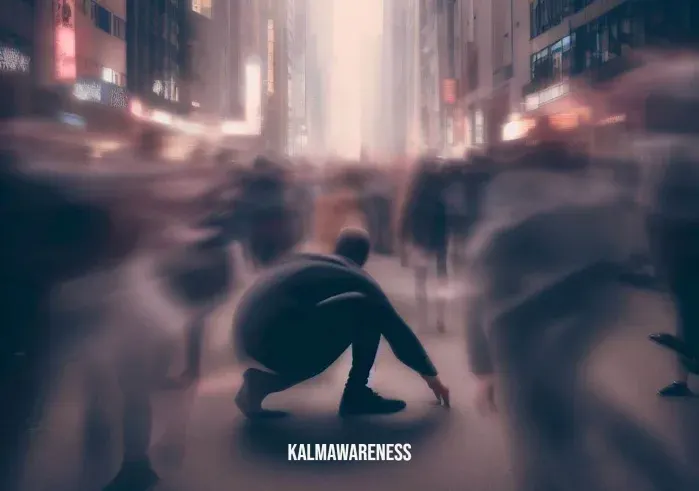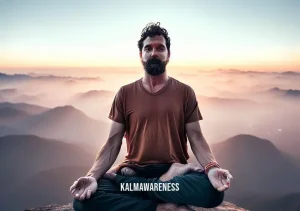Embracing Grounded Serenity: Uncover the Yoga Squat Pose Name
In this article, we’ll explore the invigorating Yoga Squat Pose, also known as Malasana. Prepare to delve into the graceful art of yoga as we guide you through the step-by-step process of this captivating posture. Embrace the earth beneath your feet and the serenity that comes with grounding yourself.
Description | Explanation
Pose Name | Yoga Squat Pose (Malasana)
Original Name | Malasana
Difficulty Level | Moderate
Pose Category | Standing Poses
Exercise Duration | Around 30 seconds to 1 minute for beginners and up to 3 minutes for advanced practitioners.
Grounded Serenity: Embracing the Yoga Squat Pose
The Yoga Squat Pose, Malasana, is a timeless posture that finds its roots in the ancient practice of yoga. It beautifully combines strength and flexibility, engaging various muscle groups and promoting mobility in the hips and ankles. The pose emanates a sense of grounding and centeredness, making it a popular choice for yogis seeking a harmonious connection with the earth.
Steps to Perform Yoga Squat Pose:
- Starting Position: Stand tall with your feet slightly wider than hip-width apart. Allow your toes to point slightly outward, finding a comfortable stance.
- Gradual Descent: As you exhale, begin to lower your body down, sinking into a deep squat. Focus on keeping your heels firmly grounded.
- Alignment: Bring your palms together in a prayer position at your heart center. Use your elbows to gently press your knees outward, helping to open up your hips.
- Lengthen the Spine: Elongate your spine and draw your shoulder blades toward your back. Keep your chest lifted, and gaze straight ahead to maintain proper alignment.
- Balance and Stability: Balance your weight evenly between your heels and the balls of your feet. Feel the connection with the earth beneath you, enhancing your stability in the pose.
- Breath Awareness: Take deep breaths as you hold the pose, inhaling and exhaling slowly and steadily. Feel the energy circulating through your body.
- Modification: For those with tight hips or limited flexibility, you can place a rolled-up mat or cushion under your heels for added support.
Benefits of Yoga Squat Pose:
- Hip Opener: Malasana stretches and strengthens the hips, helping to improve flexibility and alleviate tension in the area.
- Ankle Mobility: The posture also aids in enhancing ankle mobility, increasing joint flexibility.
- Digestive Health: By compressing the abdomen, the pose stimulates the digestive organs, promoting healthy digestion.
- Strengthens Lower Body: Yoga Squat Pose engages the thighs, hamstrings, and calf muscles, contributing to lower body strength.

Elevate Your Practice with Yoga Squat Pose
In Part 1, we embarked on the journey of the Yoga Squat Pose, exploring its origins and the step-by-step guide to achieving this grounding posture. Now, let’s take our practice to new heights as we delve into the myriad benefits of this pose, variations for different experience levels, and considerations for those who may find the pose challenging.
Benefits of Yoga Squat Pose:
- Strengthens the Core: While maintaining balance in the squat position, your core muscles work diligently to stabilize your body, leading to increased core strength over time.
- Improves Posture: Regular practice of Yoga Squat Pose encourages an upright posture, promoting a healthy alignment of the spine.
- Enhances Flexibility: As you sink deeper into the squat, your hips and groin open up, enhancing overall flexibility in these areas.
- Hip Flexor Release: The pose stretches the hip flexors, which is especially beneficial for those who spend long hours sitting.
- Energizes the Body: Yoga Squat Pose activates the Muladhara (root) chakra, infusing the body with a renewed sense of energy and vitality.
- Calms the Mind: As you connect with the earth and breathe deeply in this pose, a sense of calm and tranquility washes over your mind.
Who Cannot Do the Pose:
While Yoga Squat Pose offers numerous benefits, it may not be suitable for everyone. Individuals with the following conditions should avoid or modify the pose as needed:
- Knee or Ankle Injuries: If you have recent knee or ankle injuries, it’s best to avoid this pose until you have healed completely.
- Lower Back Issues: Those with lower back pain or discomfort should approach the pose with caution and consider using props or modifications.
- Balance Issues: Individuals with balance challenges may find it difficult to maintain stability in the squat position.
- Pregnancy: Pregnant women should consult their healthcare provider before attempting this pose, as it involves deep bending of the knees and may not be suitable for all stages of pregnancy.
Variations of the Pose for Different Experience Levels:
- Supported Yoga Squat: Place a block or a cushion under your sit bones to provide support and make the pose more accessible, especially for beginners or those with limited flexibility.
- One-Legged Squat: For intermediate practitioners looking to challenge themselves, try lifting one foot off the ground and extending it forward while maintaining the squat on the other leg.
- Bound Squat: From the squat position, bring your hands behind your back and clasp them together, stretching your shoulders and chest while in the pose.
- Elevated Heels Squat: If you find it challenging to keep your heels grounded, place a rolled-up mat or towel under your heels for added support and comfort.
- Advanced Crow Pose Transition: For advanced practitioners, transition from the Yoga Squat Pose to Crow Pose, engaging your core and arm strength to lift your feet off the ground.

Unveiling the Soulful Essence of Yoga Squat Pose
As we progress on our journey through the enchanting Yoga Squat Pose, Part 3 will take us deeper into the historical roots and spiritual significance of this timeless posture. We’ll also uncover valuable tips to enhance your practice, common mistakes to avoid, and modifications catered to individual needs.
The History of Yoga Squat Pose:
Yoga Squat Pose, or Malasana, finds its origins in the rich tapestry of traditional yoga practices. Throughout centuries, sages and yogis have embraced this posture as a way to ground themselves, connect with the earth’s energy, and attain a state of inner peace. The pose symbolizes a sense of balance, both physically and spiritually, making it a staple in the yogic journey.
The Spiritual Significance:
Beyond its physical benefits, Yoga Squat Pose holds profound spiritual symbolism. The squatting position is reminiscent of the ancient way humans used to sit close to the earth, fostering a deep connection with nature. In this pose, yogis strive to release any emotional or mental blockages, inviting a flow of positive energy through the root chakra, Muladhara. Embracing this posture signifies a union with the earth and an affirmation of one’s place in the natural order.
Tips for Enhancing Your Practice:
- Mindful Breathing: Stay attuned to your breath throughout the pose. Inhale deeply, feeling your chest expand, and exhale slowly, grounding yourself into the earth.
- Relax Your Shoulders: Keep your shoulders relaxed and away from your ears to avoid unnecessary tension.
- Engage Your Core: Activate your core muscles to support your spine and maintain stability during the pose.
- Listen to Your Body: Respect your body’s limits and only go as deep into the squat as feels comfortable for you.
- Consistent Practice: Regularly incorporate Yoga Squat Pose into your practice to experience its full range of benefits.
Common Mistakes to Avoid:
- Rounding the Back: Keep your spine straight and avoid rounding your back to prevent strain on the lower back.
- Knees Overextending: Be mindful not to let your knees extend past your toes, which can lead to undue pressure on the knees.
- Gripping the Toes: Instead of gripping your toes, use your hands to gently press your knees outward, creating space in the hips.
Modifications for Individual Needs:
- Injury Adaptation: If you have knee or ankle injuries, consider using props or opting for a supported version of the pose.
- Limited Flexibility: If you find it challenging to keep your heels grounded, use a block or cushion under your sit bones for added support.
- Pregnancy Modification: Expectant mothers can widen their stance to accommodate their growing belly and find a comfortable depth in the squat.
Complementary Poses:
To enhance your practice and embrace a holistic yoga experience, consider incorporating the following poses that complement Yoga Squat Pose:
- Pigeon Pose (Eka Pada Rajakapotasana): A deep hip opener that complements the hip flexibility gained from Malasana.
- Child’s Pose (Balasana): A gentle resting pose that stretches the lower back and promotes relaxation.
- Tree Pose (Vrikshasana): Balancing on one leg, this pose cultivates focus and stability, enhancing the grounding aspect of Yoga Squat Pose.





